#1868 Studios
Text
"Residente and Ricky Martin Unite in a Mesmerizing Ballad Journey: A Must-Watch Music Video!"
"Residente and Ricky Martin Unite in a Mesmerizing Ballad Journey: A Must-Watch Music Video!"
On the evening of Wednesday, 26th July, the Puerto Rican rapper and composer, René Pérez Joglar, famously known as Residente, unveiled his latest creation titled “Yearning to be a Balladeer,” accompanied by a music video resembling a short film, in which Ricky Martin makes an appearance. The monochromatic short film, running approximately for 10 minutes, is a work of art directed by Residente…

View On WordPress
#1868 Studios#Afo Verde#Audition#Ballad#Celebrity Duo#Chito Vera#Dramatic Shootout#Marlon Vera#Mesmerizing#Music Video#Puerto Rican rapper#Rap vs. Ballad#Rauw Alejandro#René Pérez Joglar#Residente#Ricky Martin#Ricky Martin Rapping#Rosalía#Short Film#Sony Music Latin-Iberia#Spanish Actor Javier Cámara#UFC Fighter#Unique Collaboration#Viral Music Video#World Junkies
3 notes
·
View notes
Text
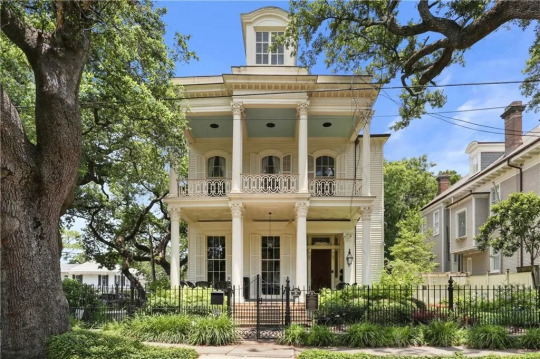

Beautiful 1868 mansion in New Orleans, Louisiana. 7bds, 6.5ba, $2.395M.
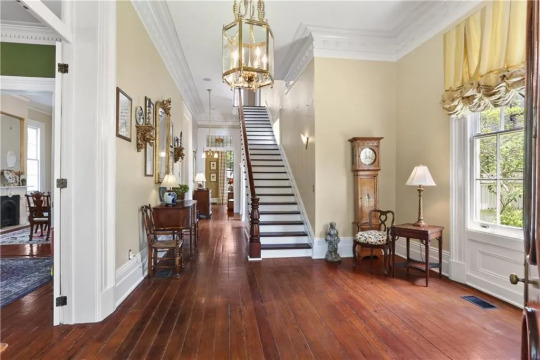
Enter a grand, sophisticated hall. This is a surprisingly large entrance hall.

The sitting room has an original fireplace, pocket doors, and a beautiful chandelier, but it's currently being used as a home office.

From the sitting room you enter a large formal dining room.


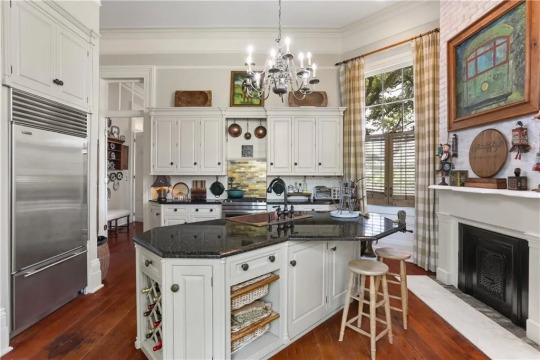
Love the kitchen. They arranged everything, including the island, to fit the original footprint and left the fireplace, too. It's a wonderful remodel.

The everyday dining room is in this adorable sun room.


There's a cozy living room on the other side of the main hall.


Pretty primary bedroom with a matching bath that beautifully combines vintage and modern.


And, this secondary bedroom also has a lovely vintage light-filled bath.


Each bedroom and bath is so pretty.

Isn't this nice? An art studio. And, it opens to the terrace.
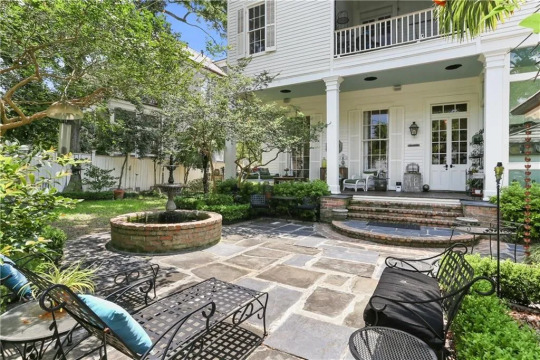

What a wonderful garden. It has some lovely antiques decorating the grounds.

There's another small building in the back.

There is a cute little powder for the garden.


Plus, this lovely guest apt.

Around the block is a 3 car garage.
181 notes
·
View notes
Text

Albert Henry Collings (British, English – 1868-1947) • The Studio Mirror • 1919
#art#painting#fine art#art history#albert henry collings#british artist#english artist#portraitist#portrait#female portrait#early 20th century british art
68 notes
·
View notes
Text

Title: Luncheon in the Studio
Artist: Edouard Manet
Date: 1868
Style: Impressionism
Genre: Genre Painting
#art history#art#painting#artwork#history#museums#culture#vintage#curators#impressionism#edouard manet#classicalcanvas
51 notes
·
View notes
Photo
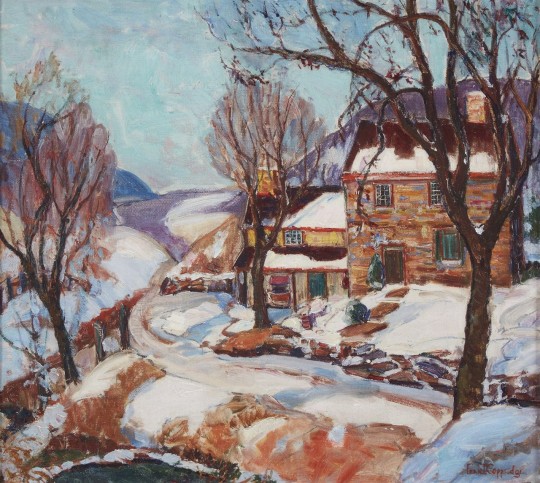


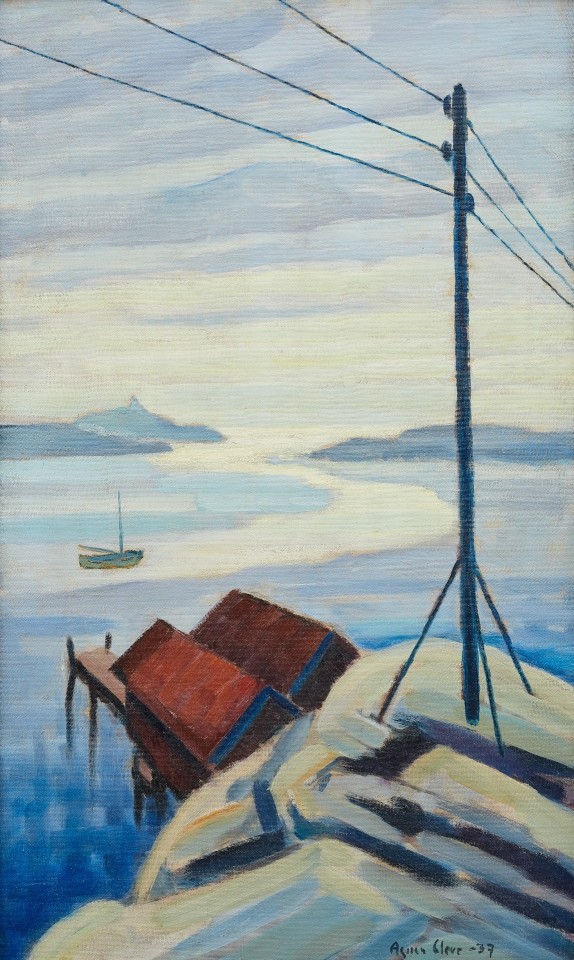


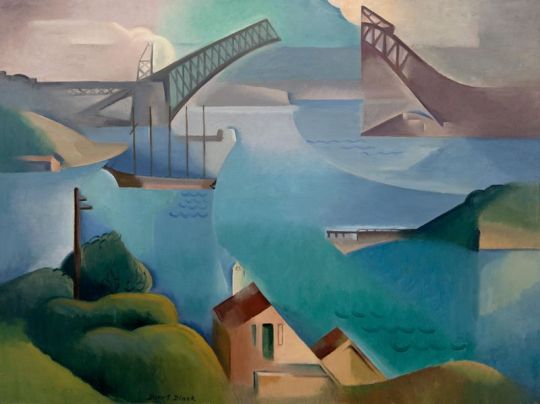
Some works that fell into the public domain in 2022:
Fern Coppedge (American, 1883-1951): Lumberville House in Winter
Beatrice Bland (British, 1864-1951): Rhododendrons and bowl of fruit in the studio window
Violet Teague (Australian, 1872-1851): Dian dreams (Una Falkiner) (1909)
Agnes Cleve-Jonand (1876-1951): Utpost i väster
Ethel Walker (Scottish, 1861-1951): Vanessa
Georges Achille-Fould (French, 1868-1951): Rosa Bonheur in her workshop (1893)
Dorrit Black (Australian, 1891-1951): The Bridge (1930)
192 notes
·
View notes
Text

Albert Henry Collings, R.B.A., R.I. (British, 1868-1947)
The studio mirror
oil on canvas
16 notes
·
View notes
Text
"LITTLE WOMEN" (1978) Review
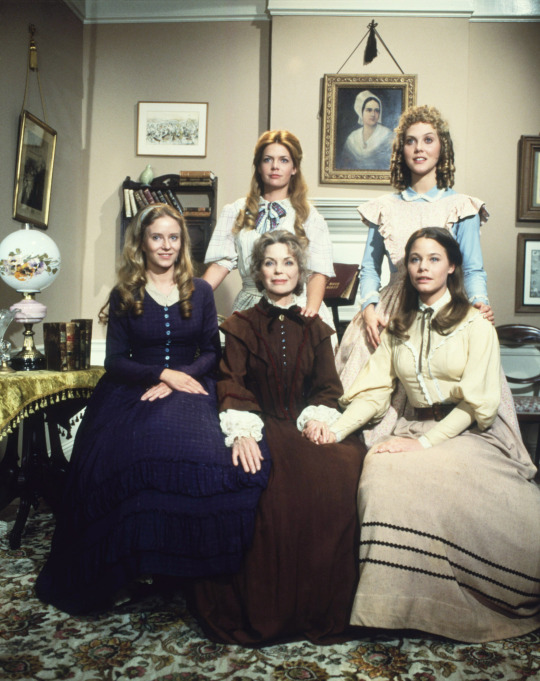
"LITTLE WOMEN" (1978) Review
There have been many adaptations of "Little Women", Louisa May Alcott's 1868 novel. And I have seen most, if not all of the live-action versions. But the first adaptation I have ever seen was NBC's adaptation that first aired back in 1978. If I might be honest, I ended up developing a rather high opinion of it.
Since my first viewing of 1978's "LITTLE WOMEN", I have seen other adaptations. And over the years, I had developed this belief that this television production from 1978 had not been good as I had originally believed. It took many years for me to give this two-part miniseries a second chance. "LITTLE WOMEN" told the story of Josephine (Jo) March and her three sisters during the 1860s - Meg, Beth and Amy. The two-part miniseries opened during the Christmas holidays in December 1861 and follow the sisters, their other family members and friends throughout the Civil War and the early post-war years. Because Jo is the main character, despite being the second sister, this adaptation of "Little Women" has the distinction of being the only version that allows her to serve as narrator.
After my recent re-watch, I could see why my opinion of "LITTLE WOMEN" had diminished over the years . . . at least from a superficial point-of-view. To be blunt, I was not that impressed by the miniseries' production values. The entire production was shot on the Universal Studios backlot and one could sometimes see the California hills in the background. Granted, I still believe set decorator Richard G. Goddard, art director Howard E. Johnson and cinematographer Joseph F. Biroc did the best they could to recreate 1860s Concord, Massachusetts, New York City and Italy. But I did have a problem with the miniseries' costume designs. On the surface, they seemed . . . serviceable for a television production set during the 1860s. But if I must be frank, the costumes also looked as if they had been taken from a costume warehouse for second-rate stage productions. Even worse, all or most of the actresses seemed to be wearing mid-to-late 1970s shoes underneath their mid-19th century dresses and gowns. I was shocked to discover that one of Hollywood's most iconic costume designer, Edith Head, had created the miniseries' costumes. So . . . what on earth happened? Head had created the costumes? "LITTLE WOMEN" was not even Head's first or last period drama. So, what happened?
Did I have any other problems with "LITTLE WOMEN"? Well . . . I did not care for leading actress Susan Dey's hairstyle in the second part of the miniseries. I realize her character, Jo March, had cut her hair to raise funds for her mother's journey to Washington D.C. But her hair never grew back. Never. Instead, it remained shorter than it originally was and styled into a bob. Why? And I had a problem with two particular performances. I will discuss one of them later. The other involved leading lady Susan Dey serving as the miniseries' narrator. Do not get me wrong. Dey is a fine actress and did the best she could. But I found her narration a bit clunky and unnecessary, thanks to the words provided to her by screenwriter Suzanne Clauser's teleplay.
Despite my quibbles, I found a lot to admire about "LITTLE WOMEN". I believe its status as a two-part miniseries, instead of a movie, screenwriter Suzanne Clauser had plenty of opportunities to fully adapt Alcott's novel with less shortcuts and more depth. I have always believed that Alcott's novel was basically a coming-of-age story for Jo March and her three sisters. To me, this made any adaptation of "LITTLE WOMEN" a major character study. And if there is one thing that the two-part miniseries did well was explore its characters and their situations with great depth.
This especially seemed to be the case of Jo's relationship with her neighbor and friend, Theodore "Laurie" Laurence, his personal relationship with his grandfather James Laurence, Amy's European trip and her romantic travails, and Meg's relationship with Laurie's tutor John Brooke. I was especially impressed by the production's handling of Jo's relationship with Professor Friedrich Bhaer. I found it very dynamic, thanks to Suzanne Clauser's screenplay, along with the performances involved. Some, but not all of the adaptations of Alcott's novel tend to forget - at times - that part of it spanned most of the U.S. Civil War. Fortunately, this adaptation never forgot. And as much as I seemed critical of the miniseries' narration, it also reminded television audiences that . . . yes, part of "LITTLE WOMEN" was partially set during the Civil War.
Speaking of performances, "LITTLE WOMEN" had the blessed luck to feature a first-rate cast. I may not have been impressed by the narration provided by Susan Dey (for which I blame another), I was more than impressed by her portrayal of the story's leading character, Josephine "Jo" March. I though she did a superb job in capturing Jo's mercurial personality and obsession with her developing profession as a writer. Meredith Baxter gave an excellent performance as the oldest March sister, Margaret "Meg" March. She conveyed Meg's vanity and obsession with the family's social status and stubborn refusal to give up her love for John Brooke. My only issue is that I believe the actress may have been a bit too old portraying a character that aged from 16 to her early 20s. Eve Plumb portrayed the shy, yet musical Elizabeth "Beth" March. I thought she did an excellent job of combining Beth's emotional, yet retiring nature and in the end, gave a very poignant performance. Ann Dusenberry was roughly 24 to 25 years old when she portrayed the youngest March sibling, Amy. Before my recent re-watch of "LITTLE WOMEN", I had assumed she was too old to portray a younger Amy. But upon my viewing, I realized that she actually managed to give a rather convincing and skillful performance of Amy during the war years (between ages 12 and 16) without to resorting to exaggerated histrionics. And I also admired her portrayal of the older Amy who found herself drawn between two men during her European trip.
I cannot deny that most of the actors who have portrayed Theodore "Laurie"/"Teddy" Laurence over the years gave some pretty damn good performances. But I believe that Richard Gilliland's portrayal of the emotional and moody "Laurie" has to be one of the two best I have ever seen, hands down. His only equal - at least in my eyes - is Jonah Hauer King's performance in the 2017 BBC miniseries. But if I had to choose my favorite portrayal of Laurie's stern, yet warm grandfather, James Laurence, it would be the one given by Hollywood icon Robert Young in this miniseries. May I be frank? I believe both actors provided some of the production's best dramatic moments in their depiction of the developing relationship between grandson and grandfather.
Dorothy McGuire gave a fine performance as Mrs. March aka "Marmie", the four sisters' mother. Thanks to the actress' performance, her Mrs. March seemed more like a well-rounded human being, instead of an archetype. Greer Garson was in fine form as the March family's tart-tongued, yet wealthy matriarch, Aunt Josephine March. William Shatner was excellent as the German-born professor who befriended Jo in New York City, Professor Friedrich Bhaer. Although I found his German accent a bit questionable, I cannot deny that he managed to provide a great deal of energy and complexity to Friedrich's relationship with Jo. Cliff Potts gave a solid performance as Meg's love interest and Laurie's tutor, John Brooke. I can say the same about Virginia Gregg, who portrayed the family's housekeeper, Hannah Mullet. I wish I could provide a better opinion of William Schallert's portrayal of the sisters' father, John March, but his presence in the miniseries seemed very limited, aside from one scene that featured the birth of Meg's children. One performance really failed to impress me and it came from John de Lancie, who portrayed Laurie's English-born classmate from Harvard and Amy's suitor, Frank Vaughan (Fred in the novel). Quite frankly, I found his performance a bit off. Knowing de Lancie for the first-rate actor he truly is, I suspect that between Alcott and screenwriter Suzanne Clauser's writing, the character ended up as a flat, one-note plot device - a situation that not even de Lancie could rise above.
Yes, I had some issues with "LITTLE WOMEN". I found some of the production values questionable, especially some of Edith Head's costumes, the hairstyles and one particular character. But overall, I believe it proved to be a first-rate adaptation of Louisa May Alcott's novel. If I must be frank, thanks to David Lowell Rich's direction, Suzanne Clauser's screenplay and a superb cast led by Susan Dey, I consider the 1978 adaptation of Alcott's novel to be among the three best I have ever seen.
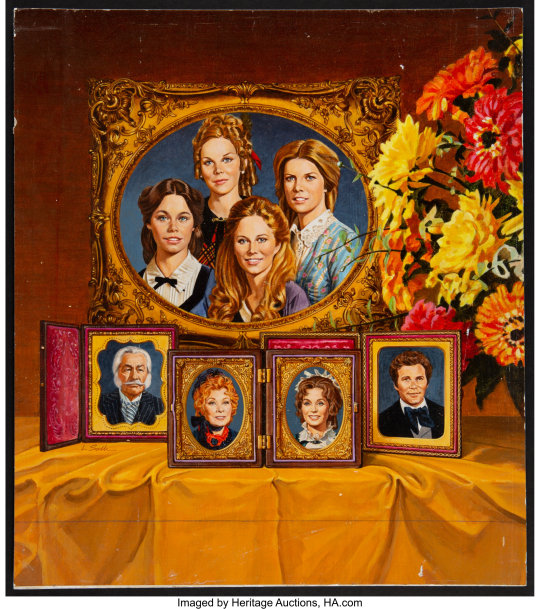
#little women#little women 1978#louisa may alcott#susan dey#jo march#meredith baxter#meg march#eve plumb#beth march#ann dusenberry#amy march#richard gilliland#theodore laurie laurence#dorothy mcguire#marmee march#robert young#greer garson#william shatner#john de lancie#david lowell rich#virginia gregg#cliff potts#u.s. civil war#gilded age#william schallert#joyce bulifant#carlene watkins#period drama#period dramas#costume dramas
11 notes
·
View notes
Photo
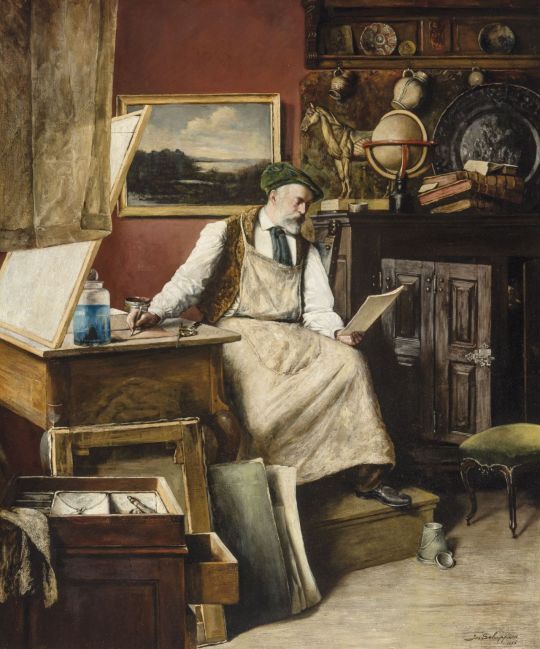
Jozef Schippers (Belgian, 1868-1950), L'artiste dans son atelier (Autoportrait) [The artist in his studio (Self-portrait)], 1896.
50 notes
·
View notes
Text
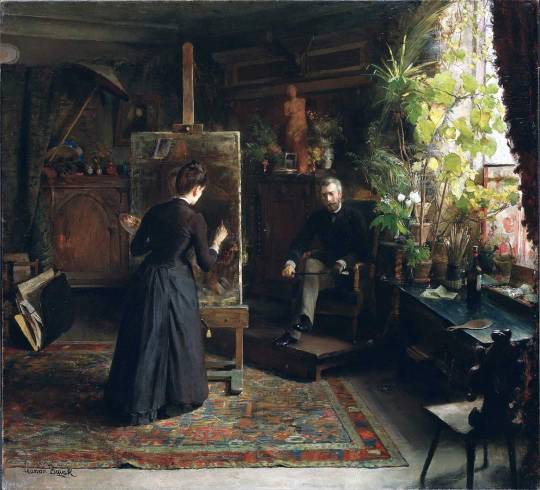
Jeanna Bauck (Swedish painter) 1840 - 1926
Den danska Konstnärinnan Bertha Wegmann målande ett Porträtt (The Danish Artist Bertha Wegmann Painting a Portrait), 1889
oil on canvas
Jeanna Bauck has depicted her close friend and colleague Bertha Wegmann while working on a portrait of Peter Dethlefsen, a Danish physician. It is an epoch-making painting capturing a woman artist in her professional role during concentrated work in her own studio. Bauck and Wegmann met in Munich in the 1870s. They lived for many years in an intimate private and professional partnership and painted several friendship images of each other.
* * *
Catalogue Note National Museum
This is an epoch-making image from 1889, when women artists and writers had a major influence on the cultural life of the period. They managed to change both the view, of the role of the artist and that of middle-class family life.
Here Jeanna Bauck has chosen to depict a female artist in the middle of the creative process. She portrays Bertha Wegmann fully absorbed in her work at the easel, in their shared studio and home in Munich. Wegmann, who was to become one of Denmark’s foremost portraitists, later painted Jeanna Bauck in their studio in Paris in 1881. In that painting, she managed to combine the free, independent woman of the time, “The New Woman”, with the refinement of middle-class femininity. Around this period, artists painted countless portraits of their friends and colleagues, but it was only the women who portrayed each other in their professional role. The will to create art is acknowledged as being paternal within a patriarchy, and as long as patriarchal societies’ are considered “natural”, it is “unnatural” and “unfeminine” for a woman to be an artist.
In the 19th century a hierarchical division between public and private space was established and which still exists today. In modernist art history, the home is therefore described as a timeless zone; the so-called women’s sphere is regarded as a static stage in relation to the narrative of modernity taking place in the public space of a dynamic city. At the time, since middle-class women were not able to move freely in the streets, women artists had to depict modernity from differing social spaces than their male colleagues. One can therefore in their images see which “spaces” were open for their portrayals. Paintings by Nordic female artists show that they literally did not move beyond the studio: it was both their home and place of work. A social space associated with professional life and thereby with the public realm. In their portraits’, the studio represents at once a space of endless possibilities, but also the absolute limit of their world. They chose not to paint the modern city outside, in contrast to the female artists of the avant-garde, who had to depict modernity from balconies and theatre boxes.
* * *
Jeanna Bauck was a Swedish portrait painter and landscape artist. She moved to Germany in 1863, studying in Dresden and Düsseldorf before settling in Munich. In the 1870s, Bauck made several study and sketching tours to the Tyrol, Switzerland and Venice. In 1880, she travelled to Paris, together with Danish artist Bertha Wegmann, with whom she shared a studio. Bauck succeeded in entering the Paris Salon that same year. In a series of groundbreaking portraits of one another, specifically in their professional role’s, Bauck and Wegmann managed to change the view of women artists in what was then seen as a traditionally male occupation. Bauck soon returned to Munich and founded a school for female artists. She exhibited in Sweden on several occasions, including at the Royal Academy exhibitions of 1866, 1868 and 1877, and the exhibition of Swedish female artists in 1911.
5 notes
·
View notes
Text
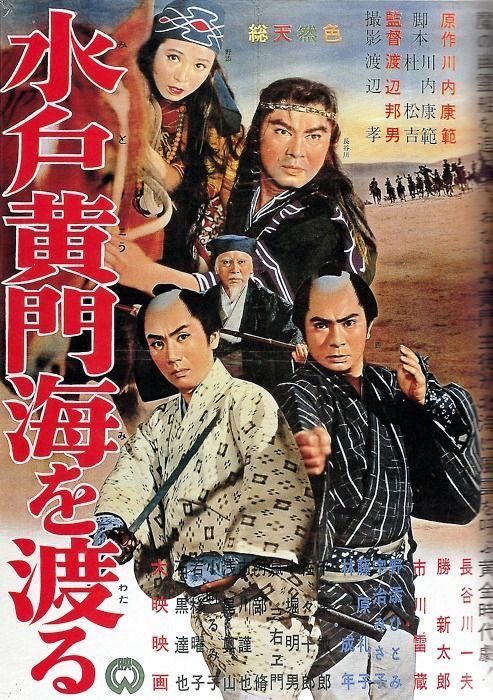
Mito Komon: Voyage To Ezo (1961).
Tokugawa Mitsukuni was a nephew of Tokugawa Ieyasu, founder of Japan's Tokugawa Shōgunate (1603-1868), and the daimyo of Mito Domain. After his death in 1701, Mitsukuni-sama's life was fictionalized into a kōdan (an oral story) entitled Mito Mitsukuni Man'yūki, that told of his extensive travels.
The kōdan was dramatized for the stage several times, then became a novel, Mito Komon, a television series in 1951, and numerous films from nearly every studio in Japan.
Mito Komon is a former vice-shōgun and retired daimyo. He is disguised as a commoner, a retired crepe merchant named Mitsuemon. He is accompanied by two young samurai: the mischievous Sasaki Sukesaburo (aka Duke-san), and the more serious Atsumi Kakunoshin (Kaku-san). The three wander Japan, righting wrongs along the way.
The scenarios are always the same: traveling incognito, the trio discover some nefarious plot or wrongdoings. They investigate, expose the evildoer(s), fight and defeat the bad guys, then Mitsuemon reveals his true identity and passes judgement. The three men then head off to find the next problem to solve.
Formulaic, but it works. So well, in fact, that a Mito Komon television series that debuted in 1969 ran for 42 (!!!!!!!!!!!) seasons! All while additional film versions were released to theaters!
Anyhoo, in this film directed by Kunio Watanabe, Daiei Film decided to go all out. The studio's three biggest stars were cast as the heroic trio: Shintaro (Zatoichi) Katsu as Kaku-san, Raizo (Nemuri Kyoshiro) Ichikawa as Suke-san - both cast against type, which I loved - and Kazuo Hasegawa as Mitsuemon.
The story involves the trio taking a trip to the island of Ezo, known now as Hokkaido. There they get involved in some troubles brewing on the island between the native Ainu people, the ruling Matsumae clan, Russian pirates/gunrunners, and all sorts of other shenanigans.
To top it off, Hasegawa-san does double duty as both Lord Ito and the Grand Chief of the Ainu, getting plenty of screen time in bargain.
All in all, quite an enjoyable romp! It left me wanting to see these three actors continuing their adventures across Japan. However, it appears that it's some unwritten tradition that the trio - at least in the films - always be played by different actors (at least that's what I've surmised from my limited research; please correct me if I'm wrong).
In the meantime I'll be hunting down more Mito Komon films. I just learned today that there's a mid-1960s one with the late, great Akira Takarada as Suke-san that I'm eager to watch.
#Mito Komon: Voyage To Ezo#Mito Komon#Sasaki Sukesaburo#Atsumi Kakunoshin#Kazuo Hasegawa#Raizo Ichikawa#Shintaro Katsu#samurai#chambara#jidaigeki#Ainu#Daiei Film
9 notes
·
View notes
Photo




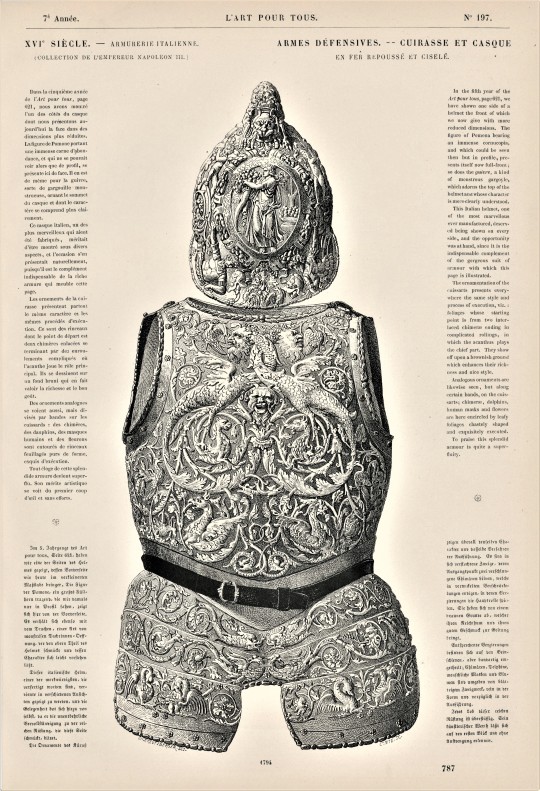



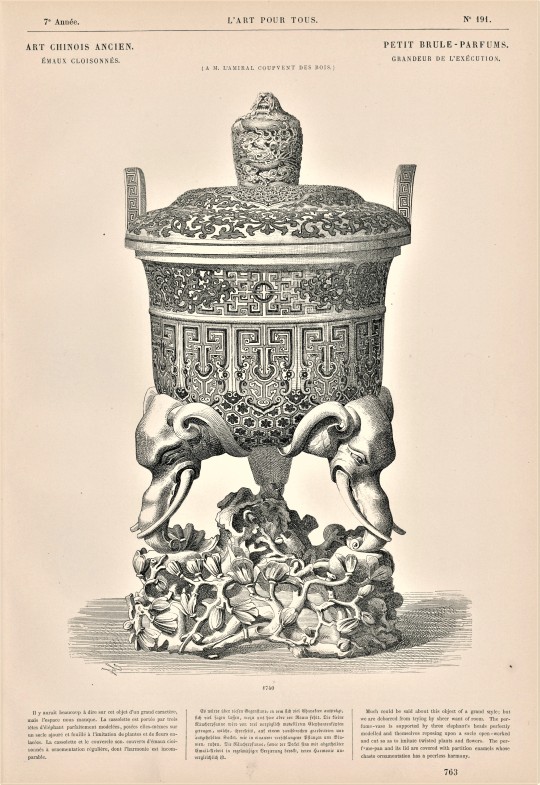
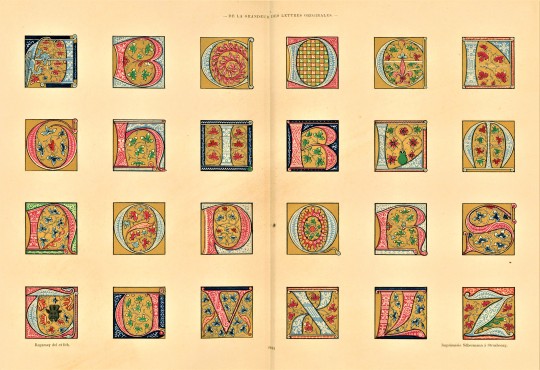
Decorative Sunday
This Sunday’s decorative plates come from an 1868 publication collecting the seventh year of the industrial and applied art magazine, L’Art Pour Tous, published in Paris from 1861 to 1906 by A. Morel. Our collected edition contains plates from No. 182 (published July 15, 1867) through No. 205 (June 30, 1868). The volume was printed by Jules Claye, originally trained by the fourth generation of the illustrious Didot family, Claye is perhaps best remembered as the printer of Victor Hugo.
The magazine was founded by Émile Reiber, the head of the design studio at French tableware firm Christofle. Claude Sauvegeot, a collector, engraver, and employee of influential architect Eugène Viollet-le-Duc, served as magazine director. Bearing the full title L’Art Pour Tous: Encyclopédie de l’Art Industriel et Décoratif, the magazine consisted of images with short texts in French, English, and German. While the publication frequency varied over the course of its run, at its height the magazine was published three times a month.
You can find more of our Decorative Sunday posts here.
-Olivia, Special Collections Graduate Intern
#Decorative Sunday#L'Art Pour Tous#L’Art Pour Tous: Encyclopédie de l’Art Industriel et Décoratif#Decorative Arts#Decorative Plates#Émile Reiber#Claude Sauvegeot#Jules Claye#A. Morel#Firmin-Didot#olivia
113 notes
·
View notes
Text
The Sculptress and the Queen in Exile: Harriet Hosmer and Marie Sophie of the Two Sicilies

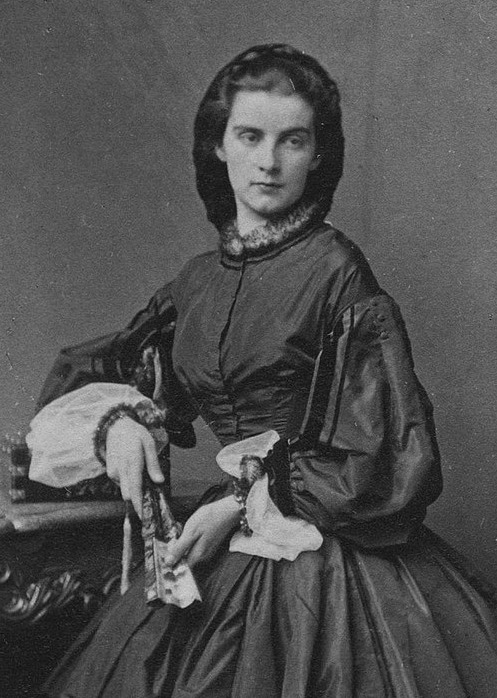
If you've been following me for some time you'll know that I'm always looking for scraps of information about Queen Marie Sophie of the Two Sicilies. Today I'll bring you a post that I've been writing for while, about one of Marie's friends and biggest admirers.
After the end of the Siege Gaeta in February 1861, and until 1870, the deposed Bourbons of the Two Sicilies lived in Rome, where they formed a court in exile. There, Queen Marie started to frequent the circles of artists, and she, who was renowned as a living heroine, became a muse for them. During the decaded of 1860s she possed for many artists in Rome, like Thomas Buchanan Read, who painted her in 1868. But perhaps the greatest piece of art for which she modeled was a real-size sculpture made by the famous sculptress Harriet Hosmer.
Perhaps those from the US, or those who are into art and sculpture history are familiar with her. I'm neither. So I started to investigate: who was Harriet Hosmer and how did she became acquianted with Marie?
Harriet "Hatty" Hosmer was born in Massachusetts on October 9, 1830. When she was nineteen-years-old she decided that she wanted to become a sculptor. There was only one problem: sculpture was considered to be a male-only proffesion. But Harriet was determined, so her father supported her, and despite women not being allowed to study anatomy, he managed to get her a spot at Missouri Medical College through the influence of Wayman Crow, a friend of the family. In November 1852 Harriet went to Rome, to finish her training as an sculptor, where she frequented the likes of Nathaniel Hawthrone and Elizabeth Barret Browning, amongst many other American artists and writers that lived there. By the 1860s she became in the leading female sculptor of her time, opening her own studio. And in 1868, Harriet begun the only sculpture of a living subject she ever did, an sculpture that once it was finished would be called her masterpiece. That is, an sculpture of Queen Marie.
Harriet informed Wayman Crow about her latest work in a letter dated January 4, 1869:
I am making a statue of the Queen of Naples. I don't know that you ever saw that photograph of her with a cloak wrapped about her, called the Gaeta costume? She came to me the other day dressed exactly as she was then, spur and all. It will make an interesting statue, for the subject is invested with so much that is historic. I forgot to say there is a pile of cannon balls at her feet, and upon them I shall get her to write her name and Gaeta and the year. The costume is perfectly classic, and she is so beautiful and artistic looking that she lends herself wonderfully to art.
Marie possed for Harriet many times, and soon the two became close. Harriet was pretty much head over heels for the Heroine of Gaeta, whom she describes in her letters as "uncommonly handsome" and delightful. Harriet's biographer Dolly Sherwood says this about the sculptor's enthusiasm for the exiled Queen:
In their love of equestrian sports, they had much in common. But beyond that, Maria Sophia represented a flesh-and-blood heroine, for she had stood beside her husband on the battlements at Gaeta during the final siege that brought down the kingdom. Wrapped in a voluminous cape, she became the symbol of resistance, urging on the defenders ot Gaeta in their last battle to sustain the kingdom of Naples and the Two Sicilies against republican forces fighting for a united Italy,
It was coincidental that Maria Sophia came to Rome as an exile in 1861 when Harriet Hosmer was exhibiting her statue ot Zenobia, the vanquished queen of antiquity. In spite of all that Hosmer could do to resuscitate her, Zenobia was far removed from contemporary struggles. But when Maria Sophia came to her studio, years later, dressed just as she was at Gaeta, in cape and spurs, here was an actual, modern-day heroine, beautiful and courageous, a tragic figure irretrievably stripped of power. Small wonder that Hatty was enchanted with her subject.
Harriet also met Empress Elisabeth, who went to Rome at the end of 1869 to accompany her sister in her confinement. I decided to left what I learned about Harriet and Elisabeth's acquaintance for a another post, since this one is already too long, however I'll leave as a teaser this small fragment of a letter that she wrote to Wayman Crown on March 17, 1870:
(...) This is a commission I am going to ask you to execute for me in the best style of Art, as it is for the Empress and the Queen (Austria and Naples understood.) They want half-a-dozen SHAKER HATS!!!!! That in large letters, for I am sure it will make you laugh. Those royal ladies are going to appear this summer in that style of head-dress, and I have no doubt that Shaker hats will afterwards be in great demand throughout Austria and Bavaria.
The letter goes on for almost two pages detailing exactly how this SHAKER HATS are, but I think this is enough.
In Dolly Sherwood's biography I also found this bit, which I'd never heard of before, about Marie asking Harriet to help her find a black maid:
As minion answering the royal bidding, she once wrote James Yeatman, champion of freed black people, to ask it he could locate a young girl to work as a maid for Maria Sophia. She told Crow that Yeatman had "fished me out a little darkey from the depths of the Black Sea and sent me a very pretty photo of her which I have forwarded to the Queen and now we will see if she is pretty enough."
Sadly I have nothing more on this since it's never mentioned again. The only thing that I can add is that Marie grew up in a household that had black servants, so she possibly wouldn't have found strange to employ a black girl.
By the beginning of 1870 the air in Rome was changing. In July, the Franco-Prussian War begun, and only weeks later Napoleon III recalled the French soldiers that were protecting the Papal States, leaving them defenseless. Many of the foreigners that were staying at Rome left, but Harriet stayed, for she didn't want to miss what she knew was a historical moment. So she saw first hand when the Italian troops finally broke into the city on September. By October, the Papal States were annexed to the Kingdom of Italy, and the Unification was completed.
Harriet wrote on December 30, 1870, that:
The Prince and Princess of Piedmont [the futures King Umberto I of Italy and Queen Margherita] came the other day, and society (Roman) is completely divided as to who shall speak to them and who shall not. Papalini or Liberali you must be. You can't be both. He was at the hunt today, and is no beauty. She, they say, is pretty and altogether charming. I haven't seen her, not even a glimpse, though one of her gentlemen of honor informs me I am to have a visit from her. But I am faithful to my violet-eyed heroine of Gaeta.
(Absolutely love Harriet describing Marie's eyes as violet as if she was the protagonist of a self-incert Wattpad fic).
On their part, Marie and her husband King Francesco II had long left the city. After the death of their daughter Cristina at only three-months-old on March 28, 1870, the sovereigns saw no more reason to stay in Rome. Marie left first April 16, and Francesco followed her April 21. They would never comeback.
The royal couple moved to Bavaria, where Harriet visit them in December 1871. From this visit comes this letter:
I wrote you from Paris, on my way to Munich, where I had a delightful week with the Queen of Naples. They live at the Castle of Garatshausen, two or three hours from Munich, a charming place on the Lake of Starnburg. I never saw her so handsome. It is quite a delight to look at her, and she was so pleased to see me, I don't know when I have had a warmer welcome. The King, too, received me with open arms, but beat me at chess every night in the most merciless manner. I went for three days and stayed seven. The Queen made me ride all her horses, and drove me about herself in the mornings in her carriage with the most faultless pair of little ponies, round as apples. The country is beautiful about the lake. In the afternoons a ride, and such scampers over the fields! I had never a scrap of riding gear with me, but I was arrayed in her own royal togs, and good riding made up the rest. In the evening always chess with the King, and having forgotten almost all I ever knew about the game, you may imagine I cut but a sorry figure. Now and then in a sort of wild and desperate way I used to make a hit which made his Majesty stare, but it made me stare much more, I promise you. When I came away there were three of us sorry, and I promised to repeat my visit next summer.
Harriet would later said that "The romance of my life was centred in Garatshausen and the Queen of Naples. My intimate friendship with this lovely woman was an episode to be remembered." She remained in contact with the Queen and King for the next years, and we also find a mention of the sculptor visiting the couple in 1876, this time in England, where she took them to visit Warwick Castle and two days later to Castle Ashby. Lady Warwick later wrote to Harriet about the "charming" visit of their Majesties, and added that they were all "greatly impressed with the Queen's beauty".
So it's at this point in which will adress what you've probably been thinking this whole time:

If you got this vibe, you are correct. Harriet Hosmer was romantically involved with several women throughout her life. Was Marie one of them? Harriet definitely seems quite enamoured with her, but so was half of Europe during the 1860s. And we have nothing on how Marie felt about Harriet. So for lack of more evidence, the nature of this relationship is to remain ambiguous to us (at least for now).
However, while I was researching this subject I discovered that in many works about Harriet it's a given that she and Marie were lovers. But other than the "romance of my life" quote, they don't provide much more evidence. Perhaps there are more of Harriet's letters about Marie that are (even) more suggestive and make for a stronger case than these that were published in 1912 (!), but I don't know.
Lastly, what happened to the statue, the so-called masterpiece? Until 1872 it was in Harriet's studio; apparently it's speculated that Marie took the statue with her to Bavaria, but its last know location was in Castle Ashby, in 1891. As I mentioned before, Harriet took the royal couple to Castle Ashby in 1876, so there is a connection between the Queen and that place. Did she gifted or sold the statue to the Marquess of Northampton, the owner Castle Ashby? We don't know. Sadly, the statue is now lost, and not even a photography of it survives. But who knows, maybe it's still out there in someone's basement, and it will soon be rediscovered. We can only hope.
Sources:
Carr, Cornelia (1912). Harriet Hosmer: letters and memories
Cronin, Patricia (2009). Harriet Hosmer: Lost and Found, A Catalogue Raisonné
Sherwood, Dolly (1991). Harriet Hosmer, American Sculptor, 1830-1908
#queen marie sophie of the two sicilies#harriet hosmer#empress elisabeth of austria#historicwomendaily
36 notes
·
View notes
Text

William Merritt Chase (American, ) • Carmencita • 1890 • Metropolitan Museum of Art, New York City
Carmencita, the dancer known as the “Pearl of Seville,” was born in 1868 in Almería, on the southeastern coast of Spain, and became famous in her home country and in France during the 1880s. After she made her New York debut in 1889 at Niblo’s Garden, she was besieged with requests for private performances. John Singer Sargent arranged for her to perform in Chase’s studio on the evening of April 1, 1890. Afterward, Chase painted this lively portrait of the dancer, in which he suggested the audience’s enthusiasm by including the gold bracelet and flowers they had tossed at her feet. Sargent’s own portrait of Carmencita (also 1890) is in the Musée d’Orsay, Paris.
- Metropolitan Museum of Art
#art#painting#fine art#art history#william merritt chase#women in paintings#american artist#american impressionism#dancers in artworks#spanish dancer#portrait#paintings of women#pagan sphinx art blog
5 notes
·
View notes
Photo
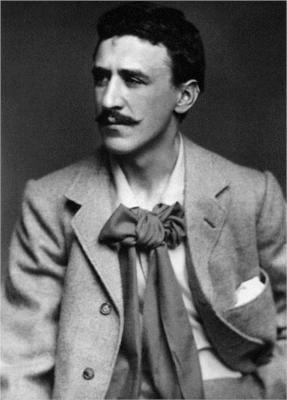




The Scottish architect and designer Charles Rennie Mackintosh died on Monday 10th December 1928, with a pencil in his hand.
As the visionary architect responsible for its re-design and re-build, Mackintosh not only transformed The Glasgow School of Art into world-renowned academy, but also put Scotland firmly on the map as a center of creativity and hub for art and design.
Charles Rennie Mackintosh was born in Glasgow on 7th June 1868, the 4th child of a policeman, William, and his wife, Margaret Rennie. There were eventually 11 children born to the couple, though 4 of them died whilst still young. He was born with a contracted sinew in one foot, which made him limp as he grew older.
He first went to school at the age of 7 and after 2 years transferred to a private school for the children of artisans. He seems to have been fairly poor at traditional ‘reading, writing and arithmetic’, and suffered from dyslexia, leading to poor spelling, for which he became known in later life. He is thought however to have been good at art from an early stage.
While generally associated with the art nouveau style, Mackintosh rejected such comparisons and did not feel part of the 19th-century art nouveau European style represented by Guimard, Horta, van der Velde, or Gaudi, and little of their sinuous "whiplash" curvilinear expression is to be seen in Mackintosh's work. He sought to unite natural forms, especially those deriving from plants and flowers, with a new architectural and design vocabulary that set him well apart from the mainstream of architects who looked to Greece, Rome, and Egypt for inspiration from the antique. His marriage to a talented artist-designer, Margaret Macdonald (1864-1933), and the marriage of her sister, Frances, to Mackintosh's close friend Herbert McNair led to the formation of a brilliantly creative group, clearly led by Mackintosh, known variously as "The Four" or "The Spook School."
Considerable attention was focussed on the work of Mackintosh and the "Glasgow Style" artists and designers who had come from the School of Art. In 1900 Mackintosh and his friends were invited to create a room complete with furnishings at the Vienna Secession exhibition. This created huge interest, and the Mackintoshes were lionized when they went to Vienna. Their exhibition display had a direct influence on the development of the Wiener Werkstatte formed shortly thereafter by Josef Hoffmann. Hoffmann and Mackintosh were close friends, and Hoffmann visited Glasgow twice to see Mackintosh's work, as did the influential critic Hermann Muthesius and the Werkstatte's patron, Fritz Wärndorfer. "The Four" exhibited widely in Europe, both together and individually, and Mackintosh received commissions for furniture from patrons in Berlin, Vienna, and elsewhere in Europe.
In Glasgow Mackintosh's greatest public exposure was through the creation of a number of restaurants, the tea rooms of his most enduring patron, Kate Cranston. The tea rooms provided a wonderful opportunity for Mackintosh to put into practice his belief that the architect was responsible for every aspect of the commissioned work. At The Willow Tea Room (1903) he converted an existing interior into a remarkable dramatic and elegant series of contrasting interiors with furniture, carpet, wall decor, light fittings, menu, flower vases, cutlery, and waitresses' wear all designed by Mackintosh to create a harmonious whole, implementing the idea of totally integrated art-architecture. It is said that Mackintosh used to go to the Room de Luxe at The Willow just before it opened for morning coffee to arrange the flowers and ensure the perfection of his creation!
Surprisingly, despite Mackintosh's fame in Europe and the numerous articles in, for example, The Studio magazine devoted to his work, he never became a dominant force in Glasgow architecture. He created the private house Windyhill in 1901, a number of tea rooms, many works of decorative art and furniture, and other architectural conversions but never had the opportunity to create a second masterpiece after the School of Art and in the manner of Hoffmann's success with the Palais Stoclet in Brussels (1905) which owes so much to Mackintosh's influence. The dramatic designs for the huge International Exhibition in Glasgow in 1901 were rejected as too radical, and his entries for other competitions—for example, Liverpool Cathedral—were unsuccessful. His direct influence on European architecture came not by examples but by suggestions, notably the distribution of a full-color lithographic portfolio of "Designs for the House of an Art-Lover", which was never built.
The Hill House of 1902 is the best example of Mackintosh's domestic architectural style and interior and has survived virtually intact. The Mackintoshes' own house, complete with its furnishings, has been brilliantly recreated at the Hunterian Art Gallery, University of Glasgow , while his Glasgow School of Art has undergone extensive restoration of its interiors and collection
Mackintosh left Glasgow in 1915 for reasons never exactly clear but associated with a notable lack of commissions and the general building slump occasioned by the onset of World War I. He moved to England and journeyed to France and created a sumptuous series of watercolors of the landscape and flowers. Opportunities for a stylized series of flower forms to become widely-distributed printed textiles failed to materialize.
The famous flowing white-on-white interiors of the Glasgow period were replaced by geometric black-on-black interiors which clearly anticipated Art Deco in his final architectural commissions: 78 Derngate, Northampton, England, in 1915/1916, and the "Dug-Out" additions to the Willow Tea Room in Glasgow.
Mackintosh was a visionary designer and architect who had a professional influence on the development of the Modern movement. Although prolific during the height of his most creative years, 1896-1916, much of his work has been lost and the remainder is essentially confined to the city of Glasgow and surrounding region. Although completely neglected and largely ignored in the middle decades of this century, he has now been the subject of intense scrutiny and rediscovery.
His furniture and textile designs are being produced with notable success, and in 1979 a writing desk he designed in 1901 for his own use reached the then world record price paid at auction for any piece of 20th-century furniture, £89,200.
Now much admired and copied, he is seen as a central figure in the development of integrated art-architecture at the turn of the century and a seminal influence on many architects and designers of the Post Modern movement in the 1970s and 1980s.
Charles Rennie Mackintosh died in distressed circumstances in London on this day in 1928. Mackintosh sadly lost his power of speech and reportedly died holding a pencil in his hand
. . There was a small ceremony at Golders Green crematorium, and while there was no notice in the Scottish press, The Times of London did appropriately acknowledge that "the whole modern movement in Europe looks to him as one of its chief originators."
An obituary did howver appear in the Glasgow Herald on December 15, it was a sloppy peice, they couldn’t even get where he passed away correct, nor the age of Mackintosh, but it does give an insight into the contemporary view of his talent.
20 notes
·
View notes
Text
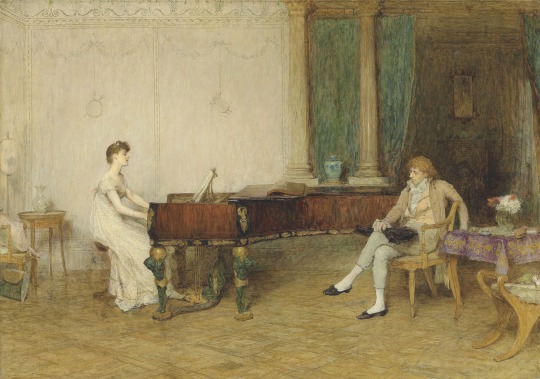
Falling on Deaf Ears, 1890
William Quiller Orchardson (British painter) 1832 - 1910
oil on canvas
private collection
While he was still in Edinburgh, Orchardson's early work included literary subjects from Shakespeare, Sir Walter Scott and Charles Dickens, and themes from Scottish history. More significantly, in terms of style and composition, Orchardson's early historical works reveal the influence of Sir David Wilkie.
In 1862 Orchardson moved to London, where he shared a studio with John Pettie, and together these two artists were quickly recognised by critics as members of the new ‘Scottish school', sharing characteristics of subject-matter, style, technique and composition. Throughout his career Orchardson shared technical and compositional devices and exchanged ideas about subject-matter with Pettie. They also had a similar compositional approach, using the drama of empty spaces and light-coloured backgrounds. Orchardson was elected ARA in 1868, an honorary member of the Royal Scottish Academy in 1871 and RA in 1877. He was a candidate for the presidency of the Royal Academy in 1896 and was knighted in 1907.
Orchardson produced cavalier and Regency costume pieces. He became famous for subjects from the Napoleonic era, and for contemporary upper-class psychological drama. He also painted portraits in a similar technique. His thinly applied paint was often considered sketchy or unfinished by contemporary critics more attuned to the solid finish of the English Pre-Raphaelite manner, but Whistler admired Orchardson's tonally subdued palette. His preparatory method involved delicate, full-scale charcoal studies, a collection of which is in the National Gallery of Scotland.
2 notes
·
View notes
Text

THE “FONTANA OSCURA” IN VILLA BORGHESE
Thorald Læssoe 1816-1878, Copenhagen
Oil on paper applied on canvas
20 x 27 cm
Signed lower right: Thorald LÆSSØE
After a brief apprenticeship with Danish “animalier” painter Christian Frederick Carl Holm, Thorald Læssøe occasionally followed courses at the Copenhagen Academy of Fine Arts, to then decide to dedicate himself to painting as a self-trained artist, along with his friends Johan Thomas Lundbye, Jens Adolph Jerichau, and Lorenz Frølich. Between 1845 and 1857 the artist lived in Rome, in a studio at the 33 Margutta Street. He will come back to Rome only in 1866, three years after his wife’s death, to remain until 1868. There is no doubt that the Roman stays had a significant impact on Læssøe’s art: indeed his paintings make an impression thanks to the strong hues and the artist’s ability to convey the Mediterranean light’s atmospheric iridescence, characteristic common to the majority of painters belonging to the Danish painting “Golden Age” of which Læssøe has been a pivotal figure. The work here presented shows the “Fontana Ovale”, one of the two fountains known as “Fontane Oscure” and located in a perspective position with respect to Museo Borghese boulevard sides. It is thought that the name “Fontane Oscure” is due to the trees’ shadow that immersed the fountain creating, during certain time of the day, surreal and magical atmospheres. They belong to the garden’s seventeenth century planning and are one of the villa’s most ancient fountains. The November-December 1977 exhibition at Palazzo Braschi in Rome, dedicated to Danish painters of the nineteenth century, saw exhibited four of his paintings entitled respectively, Le Terme di Caracalla, Veduta di Ariccia, La grotta di Egeria and Una pergola, and coming from the Museum of Fine Art Copenhagen the first two, the Soro Museum of Art the third work, and the last one comes from a Danish private collection.
2 notes
·
View notes